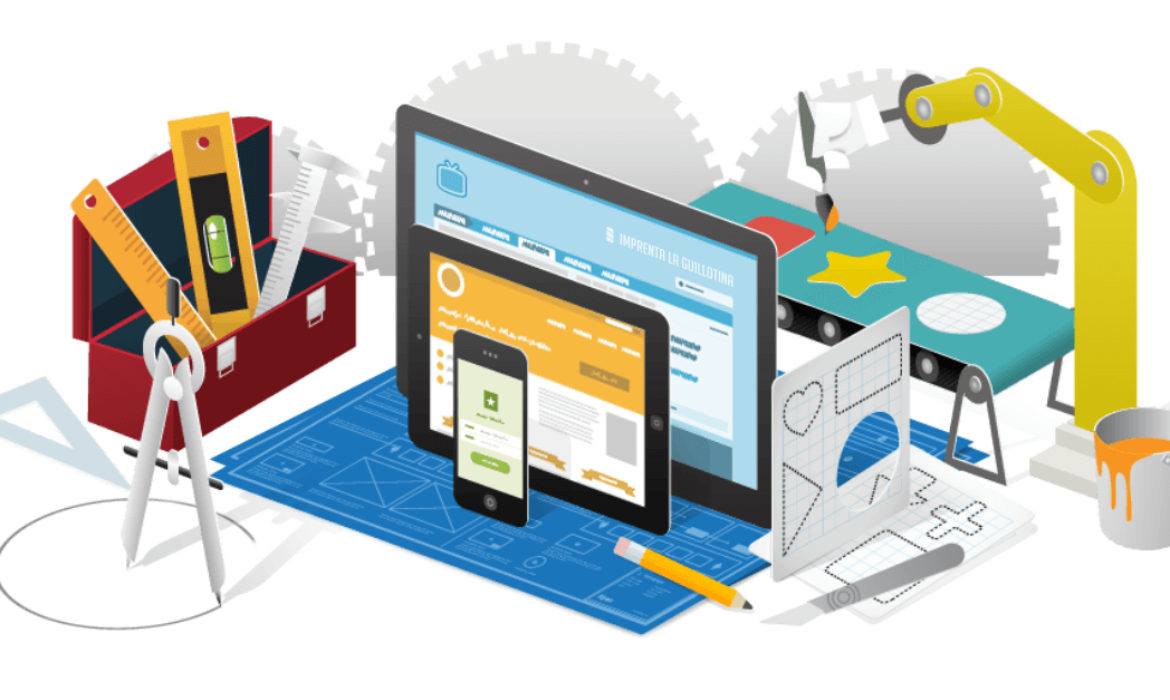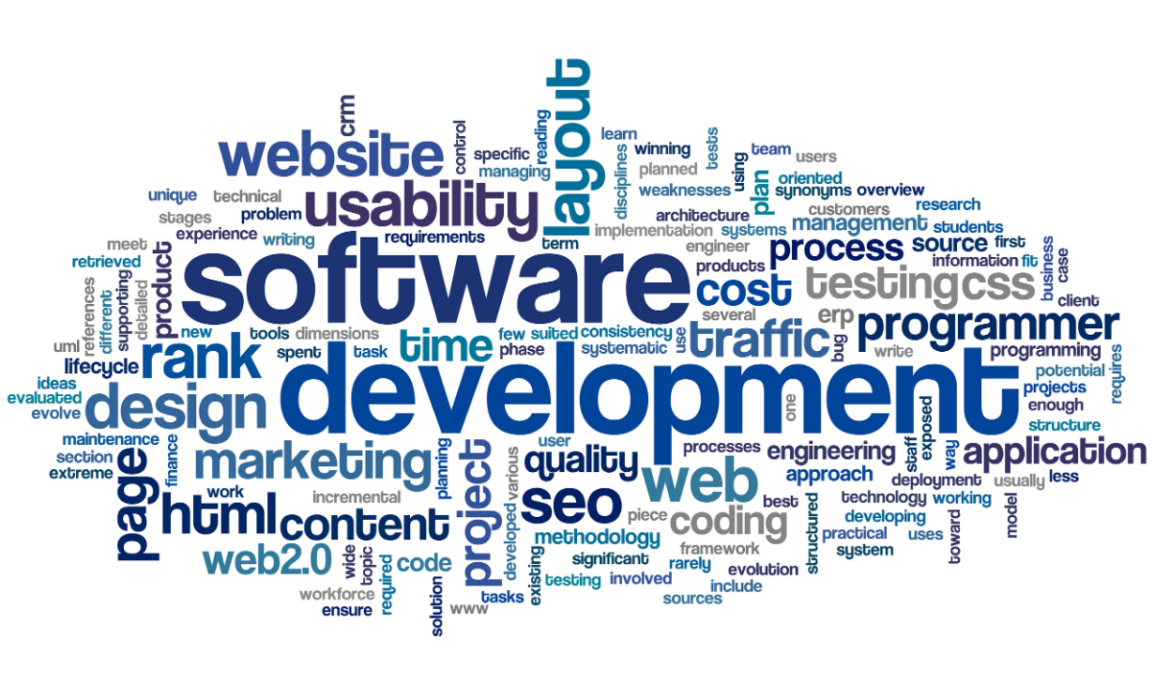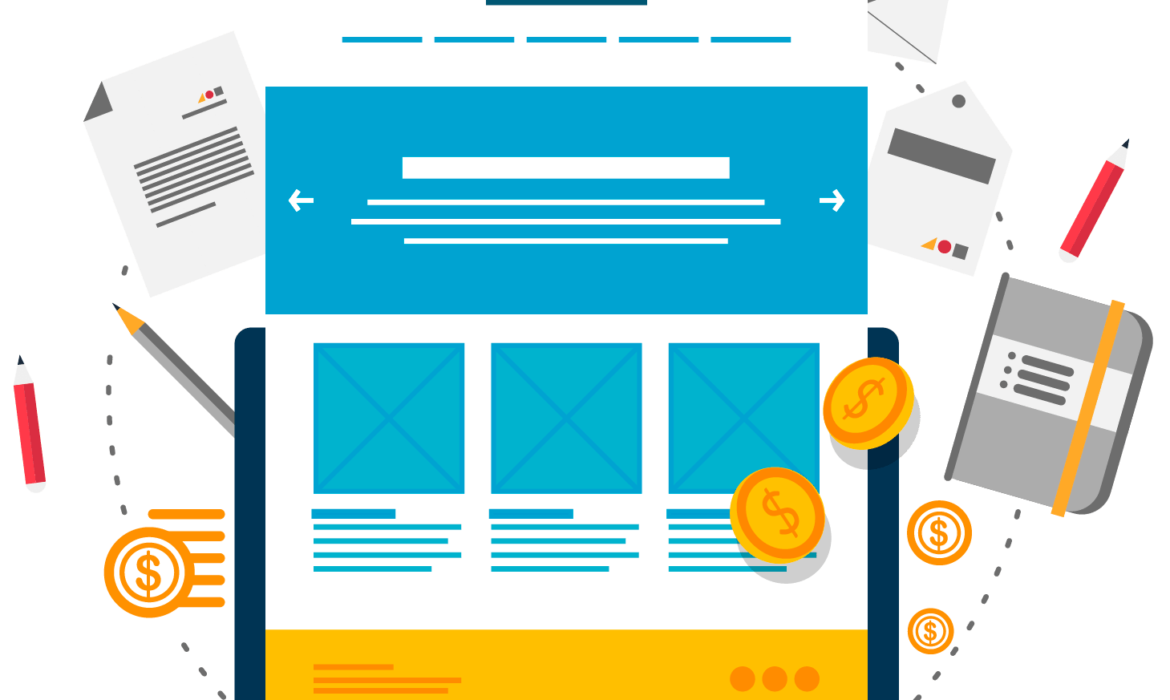WordPress Design Troubleshooting and Problem-Solving
Einführung
Design issues can significantly impact a WordPress website’s user experience. This guide provides practical steps to identify and resolve common design problems, ensuring your website looks and functions optimally.
Common Design Issues and Solutions
- Layout problems: Address issues like uneven columns, broken grids, and responsive design challenges.
- Typography issues: Fix font rendering, spacing, and readability problems.
- Image display issues: Resolve image loading, resizing, and alignment problems.
- Color and contrast issues: Improve color schemes, accessibility, and visual hierarchy.
- Responsiveness issues: Optimize your website for different screen sizes and devices.
Troubleshooting Techniques
- Inspect element: Use browser developer tools to examine HTML, CSS, and JavaScript.
- Check for conflicts: Identify conflicts between themes, plugins, and custom code.
- Test different browsers: Ensure consistent design across various browsers.
- Use a child theme: Protect customizations and isolate issues.
- Check for plugin conflicts: Temporarily deactivate plugins to identify culprits.
Improving User Experience
- Prioritize content: Ensure clear and easy-to-find content.
- Optimize page load speed: Improve website performance for faster loading times.
- Enhance accessibility: Make your website usable for people with disabilities.
- Test usability: Gather feedback from users to identify potential issues.
Abschluss
By following these guidelines and troubleshooting techniques, you can effectively address WordPress design issues and create a visually appealing and user-friendly website. Remember to test your changes thoroughly and prioritize user experience throughout the process.
Benötigen Sie eine professionelle Website-Einrichtung? Kontaktiere uns Jetzt.
Integrating Custom JavaScript and CSS for Enhanced Design
Einführung
Custom JavaScript and CSS code offer unparalleled control over your WordPress website’s appearance and behavior. By strategically incorporating these elements, you can create unique and engaging user experiences. This guide provides essential tips and techniques for effective integration.
Understanding the Basics
- Where to place code: Discuss options like child themes, header/footer sections, and plugins.
- Enqueuing scripts and styles: Explain how to properly register and enqueue scripts and styles.
- Dependency management: Discuss managing dependencies between scripts and styles.
Enhancing Design with Custom CSS
- Overriding theme styles: Demonstrate how to target specific elements and modify their appearance.
- Creating custom styles: Explain how to add new styles for unique design elements.
- Responsive design: Emphasize the importance of writing responsive CSS.
- Performance optimization: Provide tips for minimizing CSS file size and improving load times.
Adding Interactivity with Custom JavaScript
- Basic JavaScript functionality: Cover core JavaScript concepts and syntax.
- DOM manipulation: Explain how to interact with website elements using JavaScript.
- Event handling: Discuss techniques for creating interactive elements.
- AJAX for dynamic content: Showcase how to fetch data asynchronously without page reloads.
Best Practices for Integration
- Code organization: Structure your code for maintainability and readability.
- Performance optimization: Minimize script and style file sizes.
- Error handling: Implement error handling to prevent unexpected behavior.
- Compatibility: Test your code across different browsers and devices.
- Security: Protect your website from vulnerabilities by sanitizing user input and validating data.
Abschluss
By effectively integrating custom JavaScript and CSS, you can elevate your WordPress website’s design and functionality. Remember to prioritize performance, user experience, and security while experimenting with these techniques. Continuous testing and refinement are essential for achieving optimal results.
Benötigen Sie eine professionelle Website-Einrichtung? Kontaktiere uns Jetzt.
Using WordPress Hooks and Filters for Advanced Design Customization
Einführung
WordPress hooks and filters are powerful tools that allow developers to modify and extend the core functionality of WordPress without directly altering theme or plugin files. By understanding and effectively utilizing these mechanisms, you can create highly customized and efficient WordPress websites.
Understanding Hooks and Filters
- Actions: Explain how actions allow you to execute custom code at specific points in WordPress execution.
- Filters: Describe how filters enable you to modify data before it’s used by WordPress.
- Key differences: Highlight the distinction between actions and filters.
Practical Examples of Hooks and Filters
- Customizing the header: Demonstrate how to add custom elements to the header using hooks.
- Modifying content: Showcase how to filter content before it’s displayed.
- Enhancing the footer: Explain how to add custom content or scripts to the footer.
- Creating custom shortcodes: Utilize hooks to create reusable content blocks.
Best Practices for Using Hooks and Filters
- Specificity: Emphasize the importance of using specific hook names.
- Performance optimization: Discuss potential performance implications and optimization techniques.
- Testing: Highlight the need for thorough testing to prevent unexpected issues.
- Documentation: Encourage clear documentation of custom hooks and filters.
Advanced Techniques
- Creating custom hooks: Explain how to create custom hooks for specific functionalities.
- Prioritizing hooks: Discuss the order in which hooks are executed and how to influence that order.
- Debugging hooks: Provide tips for troubleshooting hook-related issues.
Abschluss
By mastering WordPress hooks and filters, you gain the ability to create highly customized and efficient WordPress websites. These powerful tools empower you to tailor your website to specific needs without compromising core functionality. Remember to use hooks and filters responsibly, always test your code thoroughly, and prioritize user experience.
Benötigen Sie eine professionelle Website-Einrichtung? Kontaktiere uns Jetzt.
Creating Child Themes for Safe and Secure Customization
Einführung
To ensure your WordPress customizations remain intact after theme updates, child themes are essential. This guide will walk you through the process of creating and utilizing child themes to safely modify your website’s appearance and functionality.
Understanding Child Themes
- What is a child theme? A child theme inherits the styles and functionality of a parent theme while allowing for modifications.
- Benefits of child themes: Protect customizations from theme updates, improve organization, and simplify customization.
- Basic structure: Learn about the core files required for a child theme (style.css and functions.php).
Creating a Child Theme
- Step-by-step guide: Provide clear instructions on creating a new child theme folder and files.
- Essential information in style.css: Explain the required information for the child theme to function correctly.
- Including the parent theme: Specify how to declare the parent theme in the child theme’s style.css file.
Customizing with Child Themes
- Overriding template files: Explain how to create copies of parent theme templates in the child theme to modify them.
- Adding custom CSS: Demonstrate how to add custom styles to the child theme’s style.css file.
- Utilizing functions.php: Show how to add custom functions to the child theme’s functions.php file.
- Best practices: Provide tips for efficient and effective child theme customization.
Maintaining Child Themes
- Updating the parent theme: Explain how to update the parent theme without affecting customizations.
- Troubleshooting issues: Provide guidance on common problems and solutions.
- Best practices for child theme management: Offer tips for organizing and maintaining multiple child themes.
Abschluss
By understanding and implementing child themes, you can confidently customize your WordPress website without compromising its integrity. This approach ensures that your design modifications remain intact even after theme updates, providing a secure and flexible development environment.
Benötigen Sie eine professionelle Website-Einrichtung? Kontaktiere uns Jetzt.
Customizing WordPress Themes for Advanced Design Control
Einführung
While WordPress offers a vast array of themes to choose from, achieving a truly unique and personalized design often requires customization. This guide explores advanced techniques to modify existing WordPress themes and unlock full design control.
Understanding Theme Structure
- Theme files: Familiarize yourself with core theme files like
style.css,header.php,footer.php, andindex.php. - Child themes: Learn how to create child themes to preserve customizations without affecting the original theme.
- Theme functions: Understand the
functions.phpfile for adding custom functions and hooks.
Customizing with Child Themes
- Create a child theme: Set up a child theme to protect your customizations.
- Override template files: Create copies of necessary files in your child theme to modify them.
- Add custom styles: Incorporate custom CSS in the child theme’s
style.cssfile. - Leverage child theme functions: Add custom functions to the child theme’s
functions.phpfile.
Advanced Customization Techniques
- CSS modifications: Use CSS to target specific elements and apply custom styles.
- PHP modifications: Edit PHP code carefully to alter theme behavior and functionality.
- Custom code snippets: Add custom code to your theme using code snippets plugins.
- Hooks and filters: Utilize WordPress hooks and filters to integrate custom code.
Best Practices for Theme Customization
- Backup your theme: Create a backup of your original theme before making changes.
- Test thoroughly: Test your customizations on different devices and browsers.
- Prioritize performance: Optimize your customizations for speed and efficiency.
- Consider accessibility: Ensure your customizations adhere to accessibility guidelines.
- Stay updated: Keep your theme and WordPress core updated to avoid conflicts.
Abschluss
By mastering theme customization techniques, you can create truly unique and personalized WordPress websites. Remember to approach customizations with caution, test thoroughly, and prioritize user experience. With careful planning and execution, you can achieve exceptional design results.
Benötigen Sie eine professionelle Website-Einrichtung? Kontaktiere uns Jetzt.
Using WordPress Design Patterns Effectively: A Guide
Einführung
Design patterns are pre-designed solutions to recurring design problems. By incorporating them into your WordPress website, you can create a more consistent, intuitive, and user-friendly experience. This guide explores various design patterns and how to apply them effectively in the WordPress context.
Understanding Design Patterns
- What are design patterns? Define design patterns and their role in web design.
- Common design patterns: Introduce popular design patterns like navigation menus, search bars, and cards.
- Benefits of using design patterns: Explain how design patterns improve user experience and efficiency.
Implementing Design Patterns in WordPress
- Choosing a suitable theme: Select a theme that aligns with your desired design patterns.
- Customizing existing patterns: Modify default patterns to match your brand identity.
- Creating custom design patterns: Develop unique patterns for specific functionalities.
- Using a design system: Create a comprehensive design system for consistency.
Popular Design Patterns for WordPress
- Navigation patterns: Explore different navigation styles (horizontal, vertical, mega menus).
- Content layout patterns: Discuss grid systems, card layouts, and hero sections.
- Form patterns: Provide examples of effective form designs (contact forms, registration forms).
- Search patterns: Implement search functionality with clear results and filters.
- Error handling patterns: Design informative and user-friendly error messages.
Best Practices for Design Pattern Implementation
- Consistency: Maintain consistent use of patterns throughout your website.
- User testing: Evaluate how users interact with your design patterns.
- Barrierefreiheit: Ensure design patterns adhere to accessibility guidelines.
- Responsive design: Adapt patterns to different screen sizes.
- Performance optimization: Consider the impact of design patterns on website speed.
Abschluss
By effectively utilizing design patterns, you can create a WordPress website that is both visually appealing and user-friendly. Consistent design patterns contribute to a positive user experience and strengthen your brand identity. Remember to adapt and refine your design patterns based on user feedback and evolving trends.
Benötigen Sie eine professionelle Website-Einrichtung? Kontaktiere uns Jetzt.
Ein responsives WordPress-Design erstellen: Eine Schritt-für-Schritt-Anleitung
Einführung
In der heutigen Welt, in der Mobilgeräte an erster Stelle stehen, Um Ihre Zielgruppe zu erreichen und ein nahtloses Benutzererlebnis zu bieten, ist eine responsive Website von entscheidender Bedeutung. Diese Anleitung führt Sie durch die Schritte zum Erstellen einer reaktionsfähigen WordPress-Website, die sich problemlos an verschiedene Bildschirmgrößen anpasst.
Die Prinzipien des Responsive Designs verstehen
- Fließendes Rasterlayout: Verwenden Sie ein flexibles Rastersystem, das sich an unterschiedliche Bildschirmbreiten anpasst.
- Flexible Bilder: Die Größe der Bilder sollte automatisch an die Bildschirmgröße angepasst werden.
- Medien-Anfragen: Verwenden Sie CSS-Medienabfragen, um spezifische Stile für unterschiedliche Bildschirmgrößen anzuwenden.
- Mobile-First-Ansatz: Entwerfen Sie zunächst für kleinere Bildschirme und skalieren Sie dann nach oben.
Auswahl eines responsiven WordPress-Themes
- Priorisieren Sie die Reaktionsfähigkeit: Wählen Sie ein Design aus, das speziell für Mobilgeräte entwickelt wurde.
- Prüfen Sie, ob es Anpassungsoptionen gibt: Stellen Sie sicher, dass Sie das Thema an Ihre Marke anpassen können.
- Bewerten Sie Geschwindigkeit und Leistung: Wählen Sie ein Design, das auf allen Geräten schnell geladen wird.
- Benutzerbewertungen überprüfen: Berücksichtigen Sie das Feedback anderer Benutzer, um die Qualität des Designs zu beurteilen.
Erstellen eines responsiven Layouts
- Erstellen Sie ein mobilfreundliches Navigationsmenü: Entwerfen Sie eine klare und benutzerfreundliche Navigation für kleinere Bildschirme.
- Inhalte für Mobilgeräte optimieren: Priorisieren Sie wichtige Inhalte und vereinfachen Sie Layouts.
- Test auf verschiedenen Geräten: Nutzen Sie unterschiedliche Geräte um eine optimale Darstellung und Funktionalität zu gewährleisten.
- Denken Sie an Touchscreens: Optimieren Sie Schaltflächen und interaktive Elemente für Touchscreens.
Optimieren von Bildern und Medien
- Bilder komprimieren: Reduzieren Sie die Dateigröße ohne Kompromisse bei der Qualität.
- Verwenden Sie responsive Bilder: Implementieren Sie srcset- und sizes-Attribute für eine effiziente Bildübermittlung.
- Bedenken Sie Lazy Loading: Verzögern Sie das Laden der Bilder, bis sie benötigt werden.
- Videos für Mobilgeräte optimieren: Stellen Sie sicher, dass Videos auf verschiedenen Geräten reibungslos wiedergegeben werden.
Testen und Verfeinern
- Verwenden Sie Browser-Entwicklertools: Testen Sie Ihre Website auf verschiedenen Bildschirmgrößen und Geräten.
- Sammeln Sie Benutzerfeedback: Sammeln Sie Feedback, um Verbesserungsbereiche zu identifizieren.
- Kontinuierlich optimieren: Bleiben Sie über Best Practices für Responsive Design auf dem Laufenden.
Abschluss
Um ein breiteres Publikum zu erreichen und ein optimales Benutzererlebnis zu bieten, ist die Erstellung einer responsiven WordPress-Website unerlässlich. Indem Sie diese Richtlinien befolgen und über Designtrends auf dem Laufenden bleiben, Sie können eine Website erstellen, die großartig aussieht und auf allen Geräten einwandfrei funktioniert.
Benötigen Sie eine professionelle Website-Einrichtung? Kontaktiere uns Jetzt.
WordPress Design Trends for 2024: A Roundup
Einführung
The digital landscape is constantly evolving, and staying updated with the latest design trends is crucial for keeping your WordPress website fresh, einnehmend, and relevant. This guide explores the top WordPress design trends shaping the web in 2024.
Key WordPress Design Trends for 2024
- Minimalism: Clean layouts, ample white space, and a focus on essential content continue to dominate.
- Dark Mode: Offering a dark theme option provides a visually appealing and user-friendly experience.
- Bold Typography: Experiment with large, striking fonts to create impactful headlines and visual hierarchy.
- Interactive Elements: Enhance user engagement with interactive components like animations, micro-interactions, and parallax scrolling.
- Video Backgrounds: Captivate visitors with immersive video backgrounds that set the mood.
- Asymmetrical Layouts: Break free from traditional grids and create visually dynamic designs.
- 3D Elements: Add depth and dimension to your website with subtle 3D effects and illustrations.
- Glassmorphism: Incorporate frosted glass effects for a modern and elegant look.
- Neumorphism: Create a soft, almost 3D appearance using subtle shadows and highlights.
- Voice Search Optimization: Design with voice search in mind to improve accessibility and user experience.
Incorporating Trends into Your WordPress Website
- Research: Explore websites and design portfolios to identify trends that align with your brand.
- Experimentation: Don’t be afraid to try new design elements and approaches.
- Balance: Avoid overwhelming your website with too many trends.
- User-Centricity: Ensure that design choices enhance user experience and readability.
- Barrierefreiheit: Prioritize accessibility to make your website inclusive for all users.
Abschluss
By staying informed about the latest WordPress design trends, you can create websites that are visually appealing, benutzerfreundlich, and stand out from the competition. Remember to adapt trends to fit your brand’s identity and avoid following trends blindly.
Benötigen Sie eine professionelle Website-Einrichtung? Kontaktiere uns Jetzt.
Choosing the Right WordPress Theme: A Detailed Guide
Einführung
Selecting the right WordPress theme is crucial for the success of your website. It sets the foundation for your online presence, influencing how visitors perceive your brand and engage with your content. With thousands of themes available, making the right choice can be daunting. This guide will help you navigate the process and select a theme that perfectly suits your needs.
Understanding Your Website’s Needs
Before diving into theme options, it’s essential to define your website’s purpose and goals. Consider the following:
- Website’s purpose: What is the primary goal of your website? Is it to sell products, share information, or build a community?
- Target audience: Who are you trying to reach with your website? Understanding your target audience will help you choose a theme that resonates with them.
- Content type: What kind of content will you be featuring? Will you be using images, Videos, blog posts, or a combination?
- Desired features: What specific features do you need on your website? Consider e-commerce, contact forms, membership areas, or other functionalities.
Key Factors to Consider When Choosing a WordPress Theme
Once you have a clear understanding of your website’s needs, you can start evaluating themes based on the following criteria:
- Design and aesthetics: The theme’s visual style should align with your brand identity and target audience.
- Responsiveness: Ensure the theme is mobile-friendly and adapts seamlessly to different screen sizes.
- Customization options: Flexibility to personalize the theme without extensive coding is essential.
- SEO friendliness: A theme optimized for search engines can improve your website’s visibility.
- Speed and performance: A fast-loading website is crucial for user experience and SEO.
- Compatibility: Check if the theme is compatible with essential plugins and your hosting environment.
- Support and updates: Reliable support and regular updates are important for theme maintenance.
- User experience: Consider how the theme enhances user navigation and engagement.
Where to Find WordPress Themes
There are numerous sources for WordPress themes:
- WordPress.org Theme Directory: Offers a vast collection of free themes.
- Theme marketplaces: Platforms like ThemeForest and Elegant Themes provide premium themes with advanced features.
- Theme developers: Many reputable theme developers offer their own collections.
Tips for Choosing the Perfect Theme
- Demo the theme: Most themes offer live previews or demos, allowing you to see how it looks with sample content.
- Read reviews: Check user reviews to get insights into the theme’s performance and support.
- Consider long-term goals: Choose a theme that can grow with your website.
- Test different themes: Experiment with multiple themes to find the best fit.
- Prioritize simplicity: A clean and clutter-free design often provides a better user experience.
Abschluss
Selecting the right WordPress theme is a crucial step in creating a successful website. By carefully considering your website’s goals, Zielgruppe, and the factors outlined in this guide, you can make an informed decision. Remember, the perfect theme is one that complements your content and enhances the overall user experience.
If you’re still unsure about which theme to choose or need assistance with customization, consider consulting a WordPress expert for personalized guidance.
Benötigen Sie eine professionelle Website-Einrichtung? Kontaktiere uns Jetzt.














